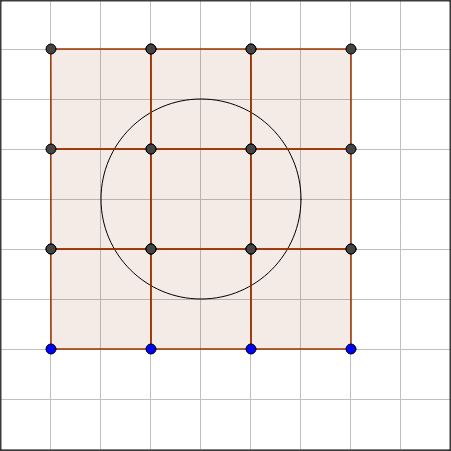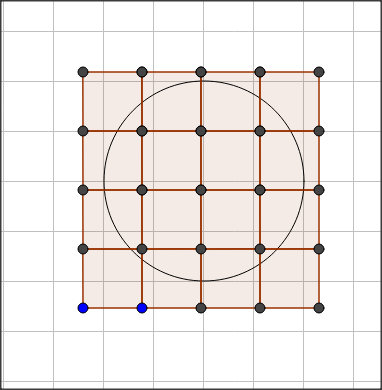I have a $d$-dimensional sphere of radius $1$. I now tessellate the space with $d$-dimensional cubes of side $L$ and uniform distribution of the origin of the tessellation. Thus the size of the tessellation is fixed but its shift is random.
A finite number of cubes will contain some portion of the surface of the sphere. Let's call this fractions $f_i$. I want to know the expected value of the maximum of those fractions.
Mathematically, I want to know $E[\max f_i]$ as a function of d and L.
For example the image above depicts a (non-random) tessellation with $d=2$, $L=1$. The maximum fraction is achieved at any of the non-corner squares. Notice that if we translate the tessellation this maximum fraction will change.
Another example with a random shifting and $L= 0.59$:
Knowing the exact answer would be great, but if you don't know it, do you have any intuition on how those quantities will affect? For instance it's obvious that for it should be increasing with L and I have the intuition that it should be decreasing with $d$ but I don't know the speeds.
Thanks a lot!


